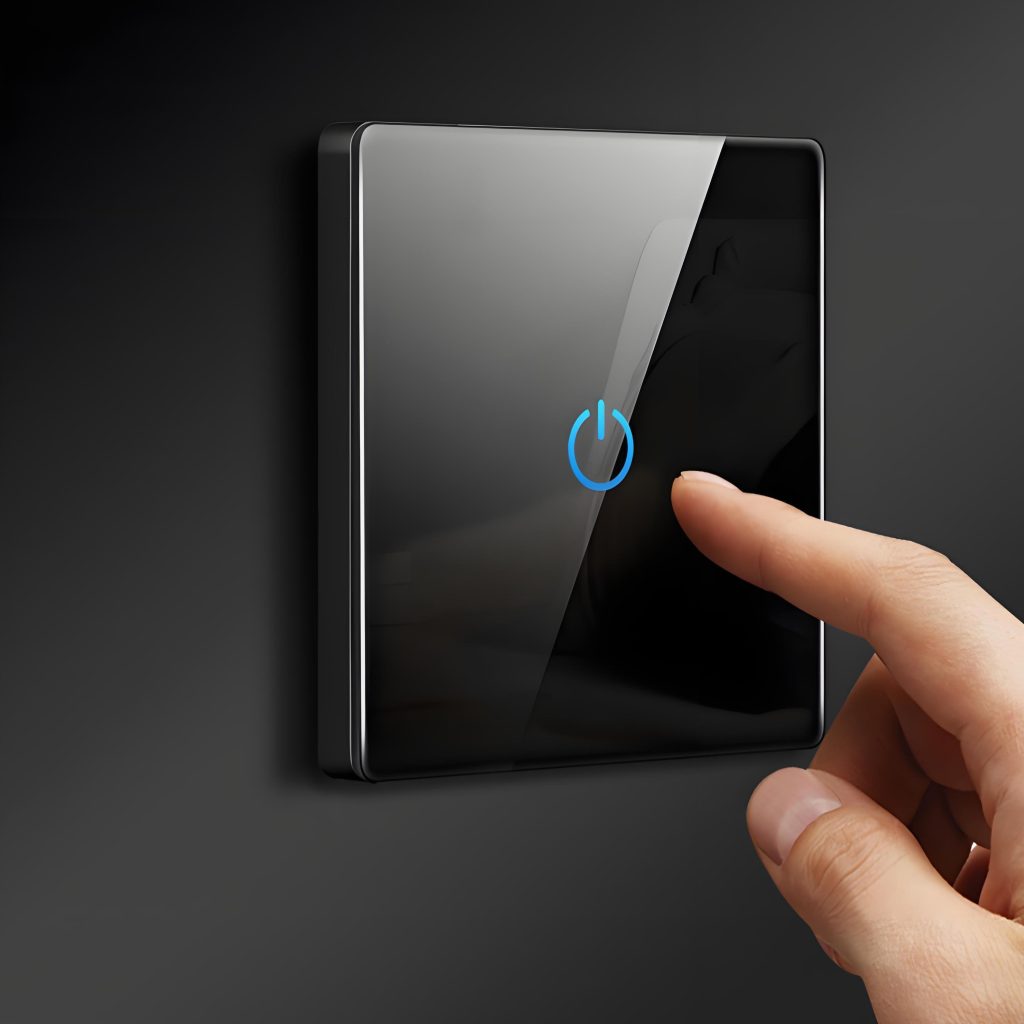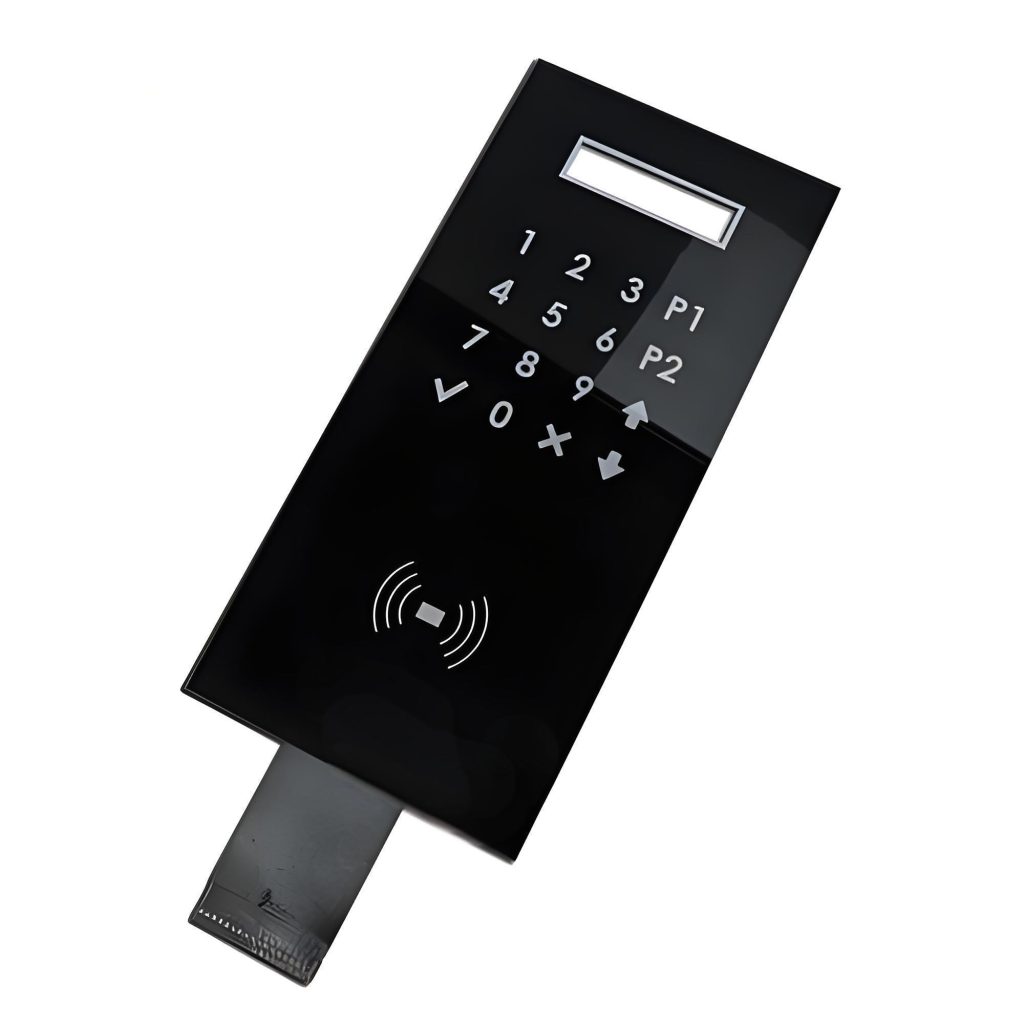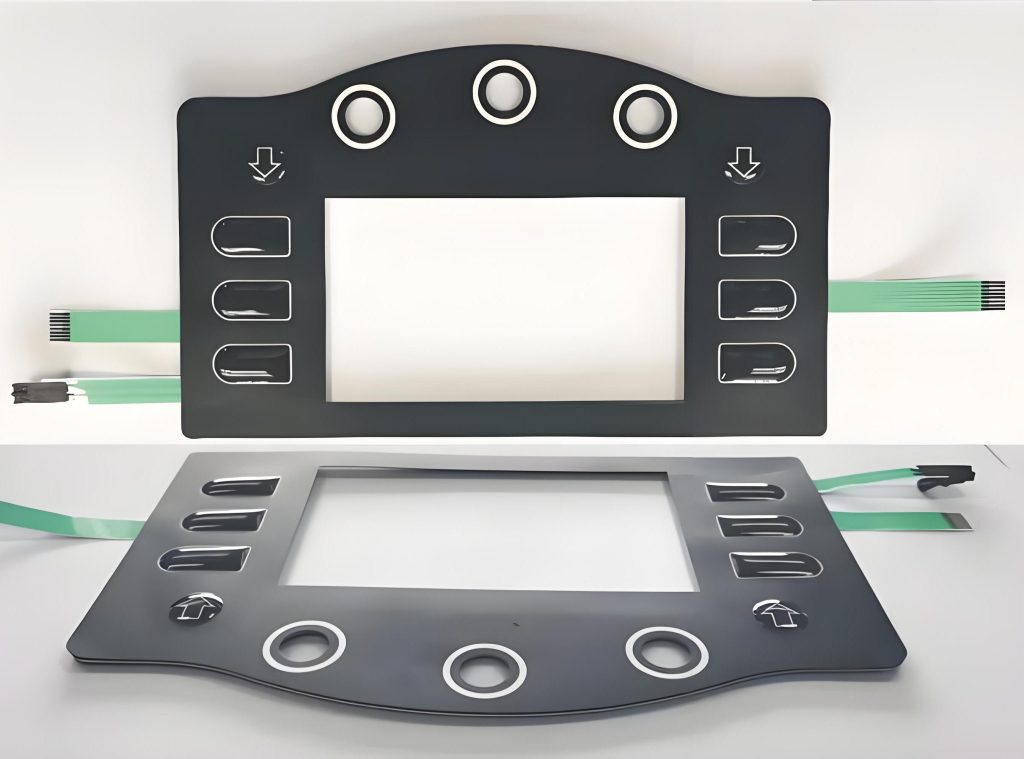
How does a capacitive membrane switch work?
How does a capacitive membrane switch work?
A capacitive membrane switch is a membrane switch that uses capacitive sensing technology. It is mainly composed of a membrane panel, a conductive layer, an isolation layer, and a control circuit. When a human finger or other conductive object approaches or touches the membrane panel of a capacitive membrane switch, the size of the capacitance will change, thereby controlling the switch state, function selection, and other operations of the electronic device.
What is a capacitive switch?
A capacitive switch is an intelligent measurement product, and its working principle is based on advanced radio frequency capacitance technology. The level is determined by the change in the capacitance of the plate, and it has the function of an alarm switch.

The working principle of a capacitive switch is based on the principle of capacitance change. When the detected object (whether it is a conductor or not) approaches the sensing surface of the switch, the dielectric constant between the two metal electrodes will change, thereby changing the capacitance value. This capacitance change is detected by the circuit and converted into a switch signal output.
A capacitive proximity switch includes a high-frequency oscillation circuit and an output circuit. When an object approaches, the electric field generated by the high-frequency oscillation circuit is disturbed, causing the oscillation frequency to change. This change is captured by the detection circuit and converted into a switch signal.
Capacitive switches are suitable for a variety of industrial automation and robotics fields, especially for the detection of non-metallic objects. Due to its non-contact detection characteristics, it avoids the wear and contact problems of traditional mechanical switches and is suitable for various harsh working environments.
How is a capacitive switch constructed?
The capacitive switch is mainly composed of two electrode plates and a dielectric layer. The dielectric layer, such as air, ceramic or plastic film, is sandwiched between the electrode plates.
When voltage is applied between the electrode plates, the dielectric will produce a capacitive effect, forming an electric field and generating attraction, so that the switch is closed; when the voltage disappears, the switch will automatically open.
Capacitive switches generally have the following application scenarios:
- Smart home: used for lighting control, curtain control, audio control, etc., one-touch control can be achieved by light touch, without physical buttons.
- Medical equipment: Due to the lack of contacts and mechanical structures, capacitive switches are suitable for medical equipment that requires high hygiene standards, such as operating tables, emergency equipment, etc.
- Aerospace: used for recording, alarm and power control, etc., because it has no sliding contacts and no mechanical friction, the switch is sensitive and does not generate electromagnetic interference.
Capacitive switches are also widely used in smart wearable devices, mobile communication devices, automotive controllers, household appliances and other fields.
How does a capacitive switch work?
Capacitive switches are mainly divided into two types: proximity switches and touch switches.
1. Capacitive proximity switch:
- Structural composition: The sensing surface of this switch is composed of two coaxial metal electrodes. One of the two electrodes is the measuring end of the switch, and the other can be the outer shell of the switch or an electrode connected to a specific object.

- Working process: When a target object approaches the electrode of the capacitor, the dielectric constant between the two electrodes of the capacitor changes, resulting in an increase in the capacitance value, triggering the switch action.
2. Capacitive touch switch:
- Structural composition: It is usually composed of a touch sensing panel and a control circuit. There is a conductive layer on the touch sensing panel, which is connected to the control circuit to form a capacitor.
- Working process: When a human finger or other conductive object touches the sensing panel, the capacitance value of the capacitor is changed. The control circuit will continuously detect the change in the capacitance value, and then trigger the corresponding switch operation.
What are the characteristics of a capacitive switch?
The main characteristics of a capacitive switch include high sensitivity, fast response, long life, energy saving and wide application range.
- High sensitivity: Capacitive switches are based on the principle of capacitance change. When a finger or object approaches, the capacitance will change, thereby triggering the switch.
- Fast response: The sensor response speed of the capacitive switch is very fast, which can quickly judge the change of capacitance value and quickly trigger the switch.
- Long life: The capacitive switch is made of multi-layer materials and has excellent mechanical properties and sealing properties. Therefore, it is more durable and has a longer service life than ordinary mechanical switches.

- Energy saving: The capacitive switch will only be triggered when someone or an object approaches, and will not be turned on all the time, which can effectively avoid wasting energy due to improper switch control.
- Wide application range: Capacitive switches are suitable for various indoor environments and can be installed on walls, floors, ceilings and other locations. They are widely used in public places, hospitals, schools, offices and other places.
What are the disadvantages of a capacitive switch?
The main disadvantages of capacitive switches include:
- Sensitivity is affected by the environment: The sensitivity of capacitive proximity switches is affected by the surrounding environment, such as temperature, humidity and other factors.
- Cannot detect metal objects: Capacitive proximity switches cannot detect metal objects.
- Affected by voltage: The stability of capacitive proximity switches is affected by the power supply voltage, and it is necessary to maintain a suitable power supply voltage to ensure its normal operation.
- Limited detection range: The detection range of capacitive proximity switches is subject to certain restrictions.
- Installation and maintenance: The installation and maintenance of capacitive proximity switches require certain professional skills and knowledge. Incorrect installation position or method may cause the sensor to malfunction or even damage the sensor.
As a new type of electronic switch technology, capacitive membrane switches have gradually been widely used in various fields due to their light, thin and soft, easy to operate, high reliability, waterproof and dustproof, beautiful and fashionable features.

Top Membrane Switches for Home Electronics Projects in 2025
You can elevate your home electronic membrane switch project in 2025 with standout models such as the 4×4 Matrix 12 Keys Keypad from SOUSHINE, the rgb-enabled strip switches from Molex, and custom graphic switches by Panasonic. These switches offer slim profiles and reliable performance, making them easy to integrate into your DIY setup. You gain ...

Top tips for fixing PS4 controller conductive film keypads
Are you frustrated because your PS4 controller buttons have stopped working? You are not alone. Many gamers experience issues with the conductive film keypad for ps4. Button failures often happen because of dirt, debris, or rough handling. Take a look at the most common causes: Cause Description Dirt and debris Accumulation in button crevices can ...

Top Membrane Switch Companies Leading the Industry in 2025
You see a dynamic market shaping the future of membrane switch technology. Leading companies like Molex, SOUSHINE, YU AN Electronics, TE Connectivity, Honeywell, Omron, Mitsubishi Electric, Panasonic, Industrial Print Technologies, SCHURTER, XYMOX, Douglas Corp, Dyna-Graphics, ELO Touchscreens, UTC, LUNFENG Technology, and Fujikura drive growth with innovation and global reach. Choosing the right membrane switch company ...
Contact us online